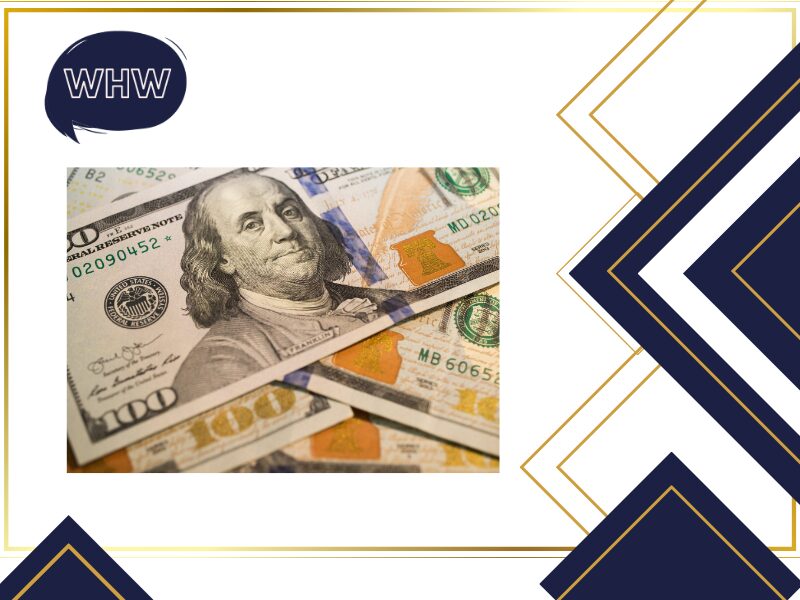The U.S. Dollar A Journey Through Its History

The U.S. dollar, often represented by the symbol “$” and known globally as the “USD,” is one of the most recognized and widely used currencies in the world. Its history is a fascinating journey that reflects the economic growth, political changes, and technological advancements of the United States. Understanding the origins and evolution of the U.S. dollar provides valuable insights into the nation’s financial system and economic power.
Early American Currency
Before the United States declared its independence, the colonies used a variety of currencies. British pounds, Spanish dollars, and other European coins circulated alongside local currencies.
In 1690, the Massachusetts Bay Colony issued the first paper money in the American colonies to fund military campaigns, setting a precedent for other colonies to follow. However, the use of different currencies created significant economic challenges, including inflation and exchange rate confusion.
Many colonies also experimented with commodity-based money, using items like tobacco, rice, and beaver pelts as a medium of exchange. This diverse monetary landscape laid the foundation for the financial innovations that would come later.
The Continental Currency
During the American Revolutionary War (1775 – 1783), the Continental Congress issued a new form of paper money known as “Continentals” to finance the conflict. These notes were not backed by tangible assets or precious metals, but rather by the expectation of future government revenue and victory in the war, which led to rapid depreciation due to overproduction, counterfeiting, and a lack of public confidence. This resulted in the phrase “not worth a Continental.”
This early attempt highlighted the challenges of establishing a stable national currency. The rapid depreciation of Continentals undermined trust in paper money and emphasized the need for a more reliable financial system. This experience influenced the founding fathers as they debated the structure of the new nation’s financial system.
The Birth of the U.S. Dollar
In 1792, the United States took a significant step toward economic stability with the passage of the Coinage Act. This law created the U.S. Mint and established the dollar as the standard unit of currency, modeled after the widely accepted Spanish dollar.
The first U.S. coins, including the silver dollar, were minted in 1794, and the dollar became the cornerstone of American commerce. The Coinage Act also established a bimetallic standard, linking the dollar to both gold and silver.
This period also marked the introduction of the decimal system for U.S. currency, setting it apart from the complex systems used by many European nations at the time. This innovation simplified transactions and made the U.S. dollar more practical for everyday use. The decision to adopt a decimal system, championed by Thomas Jefferson, reflected the desire for a rational, standardized financial system that could support a rapidly growing economy.
The Civil War and the Greenback
The Civil War (1861 – 1865) created an urgent need for funding, leading to the issuance of the first federal paper currency, known as “greenbacks,” in 1861. These notes were not backed by gold or silver but by the credit of the U.S. government.
Despite initial public skepticism, greenbacks became widely accepted, helping to finance the war and pave the way for a unified national currency. This era also marked significant financial experimentation, as the government grappled with the challenges of managing a wartime economy and maintaining public confidence in its currency.
The introduction of greenbacks also sparked debates about inflation, monetary policy, and the future role of paper money in the U.S. economy. These discussions set the stage for future monetary reforms and the eventual creation of the Federal Reserve.
The Gold Standard Era
After the Civil War, the U.S. government sought to strengthen its financial credibility by backing its currency with gold. The Gold Standard Act of 1900 officially tied the dollar’s value to a fixed amount of gold, providing stability and encouraging international trade. However, this system also made the economy vulnerable to fluctuations in gold supply and global financial crises.
The gold standard remained a central part of U.S. monetary policy until the early 20th century, when changing economic realities and global conflicts forced a reevaluation of this approach. In 1933, the U.S. suspended the gold standard domestically under President Franklin D. Roosevelt, and in 1971, President Richard Nixon ended the dollar’s convertibility to gold internationally. These moves marked a significant turning point in U.S. financial history, transitioning the nation to a fiat currency system.
The Federal Reserve and Modern Currency
In 1913, the U.S. established the Federal Reserve to stabilize the banking sector and control the money supply. This central bank introduced the Federal Reserve Note, the paper currency still used today. Although Federal Reserve Notes were introduced shortly after 1913, they became the predominant form of paper currency only after the 1930s, replacing other notes like Silver Certificates and United States Notes.
The dollar has evolved over the decades, with various designs, security features, and denominations reflecting changing economic conditions and technological innovations. The role of the Federal Reserve in controlling inflation, managing interest rates, and maintaining financial stability has been critical to the dollar’s strength and stability over the past century.
The Fed’s actions during economic crises, including the 2008 financial crisis and the COVID-19 pandemic, have highlighted its vital role in supporting the U.S. economy. The Federal Reserve’s ability to respond to economic shocks has been a key factor in maintaining the U.S. dollar’s global dominance.
The U.S. Dollar as a Global Currency
Today, the U.S. dollar is the world’s primary reserve currency, used in international trade and held by central banks worldwide. It represents economic stability and strength, playing a critical role in global finance and politics.
The U.S. dollar’s dominance is a testament to the economic influence of the United States and its role in shaping the global financial system. It also reflects the trust that international markets place in the U.S. economy and its political institutions.
U.S. Coins and Banknotes: Designs and Symbolism
The design of U.S. coins and banknotes has evolved significantly over the years, reflecting the nation’s history, values, and cultural identity. Here is a closer look at the most commonly used coins and bills in the United States and the symbols they carry:
Coins
- Penny (1 cent) – Features the profile of Abraham Lincoln on the obverse (front) side, honoring the 16th president who led the nation through the Civil War. The reverse side has featured several designs, including the Lincoln Memorial (1959–2008), the Lincoln Bicentennial series (2009), and the Union Shield (2010–present), symbolizing national unity and strength.
- Nickel (5 cents) – Displays a portrait of Thomas Jefferson, the third U.S. president and principal author of the Declaration of Independence. The reverse side traditionally featured his home, Monticello, but recent designs include the Westward Journey series, which commemorates the Lewis and Clark expedition.
- Dime (10 cents) – Shows President Franklin D. Roosevelt, known for his leadership during the Great Depression and World War II. The reverse features a torch, olive branch, and oak branch, representing liberty, peace, and strength.
- Quarter (25 cents) – Traditionally featured George Washington, the first U.S. president, on the obverse. The reverse has included a wide range of designs, from state-specific symbols in the 50 State Quarters series (1999–2008) to the current American Women Quarters Program, celebrating influential American women.
- Half Dollar (50 cents) – The obverse side shows President John F. Kennedy, a tribute to his leadership and legacy. The reverse features the presidential seal, symbolizing power and national pride.
- Dollar Coins (Various designs) – These coins have featured many different figures, including Sacagawea, a Native American woman who assisted the Lewis and Clark expedition, and U.S. presidents in the Presidential $1 Coin Program (2007–2016). Recent issues include Native American themes and significant historical figures.
Banknotes
- $1 Bill – Features a portrait of George Washington, with the reverse showing the Great Seal of the United States, including the iconic pyramid with the Eye of Providence and the national eagle.
- $2 Bill – Rarely seen in circulation, this bill includes a portrait of Thomas Jefferson and a depiction of the presentation of the Declaration of Independence draft based on the painting by John Trumbull on the reverse.
- $5 Bill – Displays Abraham Lincoln, with the Lincoln Memorial on the reverse, emphasizing his role in preserving the Union.
- $10 Bill – Shows Alexander Hamilton, the first U.S. Secretary of the Treasury, with the U.S. Treasury building on the reverse.
- $20 Bill – Features Andrew Jackson, the seventh U.S. president, with the White House on the reverse.
- $50 Bill – Includes a portrait of Ulysses S. Grant, the Civil War general and 18th president, with the U.S. Capitol on the reverse.
- $100 Bill – Displays Benjamin Franklin, a founding father and prominent inventor, with Independence Hall on the reverse.
Conclusion
The history of the U.S. dollar is a remarkable story of resilience, innovation, and global influence. From colonial notes to becoming the world’s dominant reserve currency, the dollar has played a central role in shaping economic systems and driving American prosperity.
Understanding its evolution offers more than just a glimpse into the past — it provides perspective on the financial shifts still unfolding today. As the global economy becomes increasingly digital and decentralized, new forms of money are emerging that challenge traditional currencies.
As you reflect on the dollar’s journey, it’s worth asking: could the next chapter in monetary history be written not by governments, but by code? Enter the world of cryptocurrency.
Related content

Saving or Investing: Which is the Best Option?

How Financial Education Can Help Avoid Excessive Debt

What is Revolving Credit?

How to Set Financial Goals for the Future

5 Ways to Tackle Financial Stress
